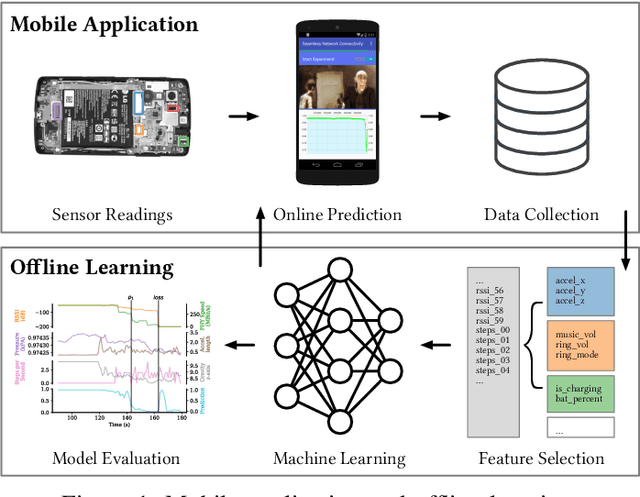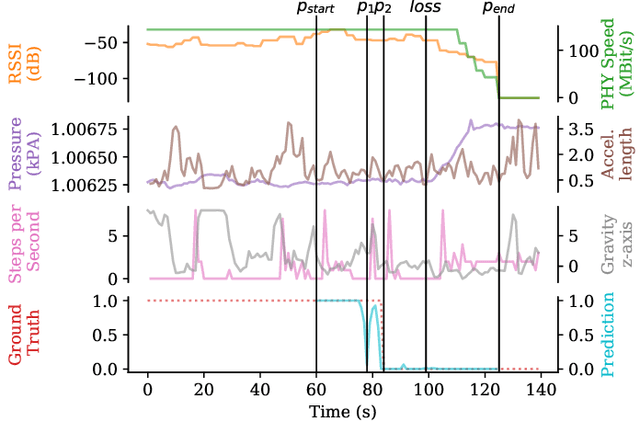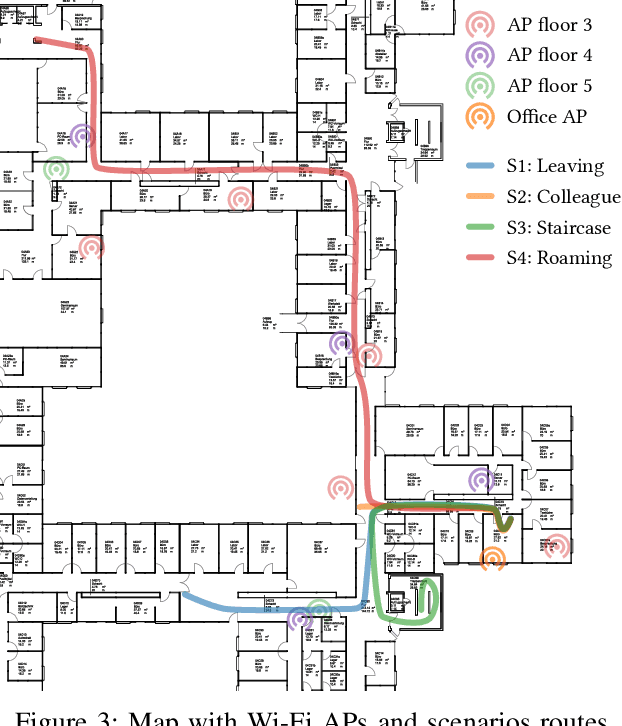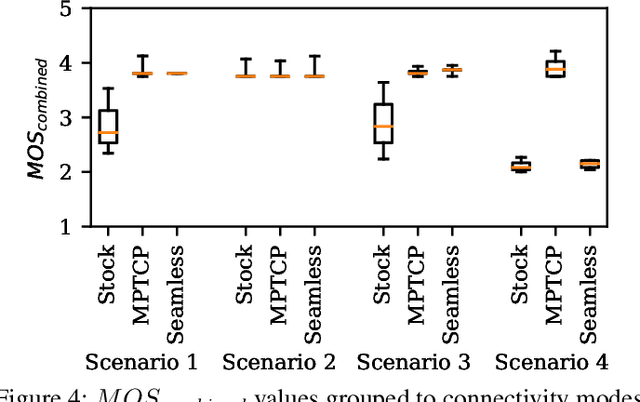Learning Wi-Fi Connection Loss Predictions for Seamless Vertical Handovers Using Multipath TCP
Paper and Code
Jul 24, 2019



We present a novel data-driven approach to perform smooth Wi-Fi/cellular handovers on smartphones. Our approach relies on data provided by multiple smartphone sensors (e.g., Wi-Fi RSSI, acceleration, compass, step counter, air pressure) to predict Wi-Fi connection loss and uses Multipath TCP to dynamically switch between different connectivity modes. We train a random forest classifier and an artificial neural network on real-world sensor data collected by five smartphone users over a period of three months. The trained models are executed on smartphones to reliably predict Wi-Fi connection loss 15 seconds ahead of time, with a precision of up to 0.97 and a recall of up to 0.98. Furthermore, we present results for four DASH video streaming experiments that run on a Nexus 5 smartphone using available Wi-Fi/cellular networks. The neural network predictions for Wi-Fi connection loss are used to establish MPTCP subflows on the cellular link. The experiments show that our approach provides seamless wireless connectivity, improves quality of experience of DASH video streaming, and requires less cellular data compared to handover approaches without Wi-Fi connection loss predictions.
 Add to Chrome
Add to Chrome Add to Firefox
Add to Firefox Add to Edge
Add to Edge